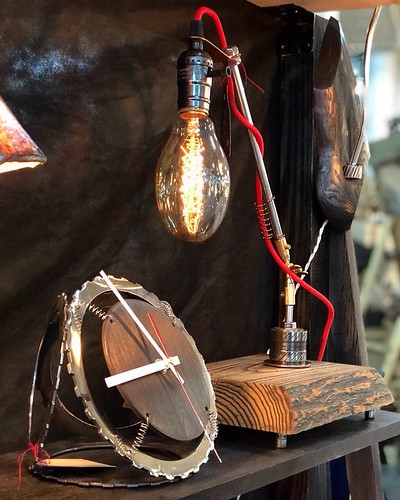Ple), CD (turquoise), CDRA (orange) and CD (green), whereas white indicates the absence of your person markers. The second part of the heat map describes the abundance with the V, V and VV Tcell compartments and their differentiations signatures. The black lines Apocynin web within the codingtable for the differentiation markers show the frequencies in the parental compartments. The heat map is horizontally divided into CMVseronegatives (CMV) inside the upper and seropositives (CMV) inside the reduced element. Both parts are additional stratified for topic ageWistubaHamprecht et al. Immunity Ageing :Page ofCMVserostatus (1st lines of each section comparing young seronegative with old seropositive and seronegative men and women in Extra file Table Sp p . respectively and Further file Table Sp p . respectively). For reference purposes, added tables (Further file) show in detail the p values on the MannWhitney comparisons in the groups along with the median frequencycounts with the latter on all identified cellular populations. Tcells in peripheral blood were classified into V, V or the pool of other Tcells carrying neither (VV). Most Tcells are predominantly V in N-Acetyl-Calicheamicin �� biological activity younger subjects, independent of their CMVserostatus. The exact same is true in older CMVseronegatives but not in CMVseropositives (blue sections in Fig. a and Additional file Figure S). The latter have a nearly equal proportion of V and V cells (. andor median values of and cellsL blood, respectively). Fig. c displays a gradual reduction on the median frequencies on the V compartment starting with young CMVseronegative with the highest frequencies, then old CMVseronegatives, young CMVseropositives and finally the older CMVseropositive subjects that have the lowest frequencies. There is a reciprocal raise from the V compartment (Fig. d; for statistical evaluation, see More file Table S). As a group, young and old CMVseronegatives have been not considerably distinct from 1 a further
within this respect, while a number of the older men and women had considerably greater frequencies of this cell sort. Statistical significance was achieved, on the other hand, for the comparison in the frequencies in old and young CMVseronegatives vs old seropositives displaying CMV as an enhancing issue of ageassociated alterations (Fig. cp . for each).ABCDEFFig. Phenotypic distribution with the V, V and VV  Tcell subsets in young and old CMV seropositive and seronegative individuals. (a) Median frequencies with the three subsets in the total Tcells and (b) inside the CD group of Tcells. Detailed variations are shown between young (y) and old (o) CMVseropositives and seronegatives of V cells (c), V cells (d), VV cells (e) plus the V:V ratio (f). The Mann hitney test was applied for the statistical comparison. Bonferronicorrection adjusted the significance cutoff to p .WistubaHamprecht et al. Immunity Ageing :Page ofSimilar patterns were identified when analyzing absolute cell counts (More file Table S), but statistical evaluation revealed a slightly distinctive scenarioLower counts of V cells had been discovered inside the old, regardless of CMVserostatus in comparison with young seronegative (More file Table S). Young subjects, no matter their CMVserostatus, have additional V cells than old CMVseronegatives (Further file Table S) PubMed ID:https://www.ncbi.nlm.nih.gov/pubmed/28356898 whereas old CMVseropositives possess the highest count of all and significantly larger counts than old seronegative men
Tcell subsets in young and old CMV seropositive and seronegative individuals. (a) Median frequencies with the three subsets in the total Tcells and (b) inside the CD group of Tcells. Detailed variations are shown between young (y) and old (o) CMVseropositives and seronegatives of V cells (c), V cells (d), VV cells (e) plus the V:V ratio (f). The Mann hitney test was applied for the statistical comparison. Bonferronicorrection adjusted the significance cutoff to p .WistubaHamprecht et al. Immunity Ageing :Page ofSimilar patterns were identified when analyzing absolute cell counts (More file Table S), but statistical evaluation revealed a slightly distinctive scenarioLower counts of V cells had been discovered inside the old, regardless of CMVserostatus in comparison with young seronegative (More file Table S). Young subjects, no matter their CMVserostatus, have additional V cells than old CMVseronegatives (Further file Table S) PubMed ID:https://www.ncbi.nlm.nih.gov/pubmed/28356898 whereas old CMVseropositives possess the highest count of all and significantly larger counts than old seronegative men  and women (Added file Table S, p .). Relative frequencies of the doublenegative VV compartment did not differ significantl.Ple), CD (turquoise), CDRA (orange) and CD (green), whereas white indicates the absence of the individual markers. The second part of the heat map describes the abundance of your V, V and VV Tcell compartments and their differentiations signatures. The black lines within the codingtable for the differentiation markers show the frequencies with the parental compartments. The heat map is horizontally divided into CMVseronegatives (CMV) within the upper and seropositives (CMV) in the decrease part. Both components are further stratified for subject ageWistubaHamprecht et al. Immunity Ageing :Web page ofCMVserostatus (initially lines of each section comparing young seronegative with old seropositive and seronegative men and women in Added file Table Sp p . respectively and Additional file Table Sp p . respectively). For reference purposes, added tables (Added file) show in detail the p values of the MannWhitney comparisons with the groups and the median frequencycounts of your latter on all identified cellular populations. Tcells in peripheral blood have been classified into V, V or the pool of other Tcells carrying neither (VV). Most Tcells are predominantly V in younger subjects, independent of their CMVserostatus. The identical is correct in older CMVseronegatives but not in CMVseropositives (blue sections in Fig. a and Additional file Figure S). The latter have a almost equal proportion of V and V cells (. andor median values of and cellsL blood, respectively). Fig. c displays a gradual reduction from the median frequencies with the V compartment starting with young CMVseronegative with all the highest frequencies, then old CMVseronegatives, young CMVseropositives and lastly the older CMVseropositive subjects who’ve the lowest frequencies. There’s a reciprocal raise from the V compartment (Fig. d; for statistical evaluation, see Added file Table S). As a group, young and old CMVseronegatives had been not substantially different from one particular one more
and women (Added file Table S, p .). Relative frequencies of the doublenegative VV compartment did not differ significantl.Ple), CD (turquoise), CDRA (orange) and CD (green), whereas white indicates the absence of the individual markers. The second part of the heat map describes the abundance of your V, V and VV Tcell compartments and their differentiations signatures. The black lines within the codingtable for the differentiation markers show the frequencies with the parental compartments. The heat map is horizontally divided into CMVseronegatives (CMV) within the upper and seropositives (CMV) in the decrease part. Both components are further stratified for subject ageWistubaHamprecht et al. Immunity Ageing :Web page ofCMVserostatus (initially lines of each section comparing young seronegative with old seropositive and seronegative men and women in Added file Table Sp p . respectively and Additional file Table Sp p . respectively). For reference purposes, added tables (Added file) show in detail the p values of the MannWhitney comparisons with the groups and the median frequencycounts of your latter on all identified cellular populations. Tcells in peripheral blood have been classified into V, V or the pool of other Tcells carrying neither (VV). Most Tcells are predominantly V in younger subjects, independent of their CMVserostatus. The identical is correct in older CMVseronegatives but not in CMVseropositives (blue sections in Fig. a and Additional file Figure S). The latter have a almost equal proportion of V and V cells (. andor median values of and cellsL blood, respectively). Fig. c displays a gradual reduction from the median frequencies with the V compartment starting with young CMVseronegative with all the highest frequencies, then old CMVseronegatives, young CMVseropositives and lastly the older CMVseropositive subjects who’ve the lowest frequencies. There’s a reciprocal raise from the V compartment (Fig. d; for statistical evaluation, see Added file Table S). As a group, young and old CMVseronegatives had been not substantially different from one particular one more
within this respect, even though a few of the older folks had a great deal greater frequencies of this cell kind. Statistical significance was achieved, nonetheless, for the comparison in the frequencies in old and young CMVseronegatives vs old seropositives displaying CMV as an enhancing issue of ageassociated alterations (Fig. cp . for both).ABCDEFFig. Phenotypic distribution from the V, V and VV Tcell subsets in young and old CMV seropositive and seronegative men and women. (a) Median frequencies of the three subsets within the total Tcells and (b) within the CD group of Tcells. Detailed differences are shown in between young (y) and old (o) CMVseropositives and seronegatives of V cells (c), V cells (d), VV cells (e) along with the V:V ratio (f). The Mann hitney test was used for the statistical comparison. Bonferronicorrection adjusted the significance cutoff to p .WistubaHamprecht et al. Immunity Ageing :Web page ofSimilar patterns had been identified when analyzing absolute cell counts (Extra file Table S), but statistical evaluation revealed a slightly distinct scenarioLower counts of V cells have been discovered within the old, no matter CMVserostatus in comparison with young seronegative (Extra file Table S). Young subjects, no matter their CMVserostatus, have extra V cells than old CMVseronegatives (More file Table S) PubMed ID:https://www.ncbi.nlm.nih.gov/pubmed/28356898 whereas old CMVseropositives possess the highest count of all and substantially larger counts than old seronegative people (More file Table S, p .). Relative frequencies in the doublenegative VV compartment didn’t differ significantl.
http://cathepsin-s.com
Cathepsins
